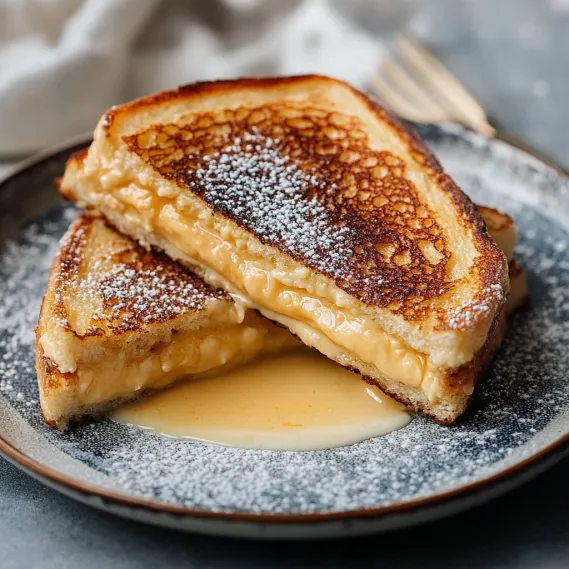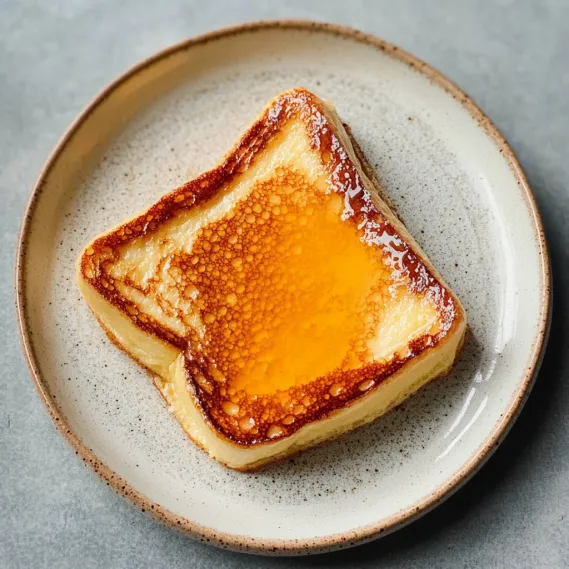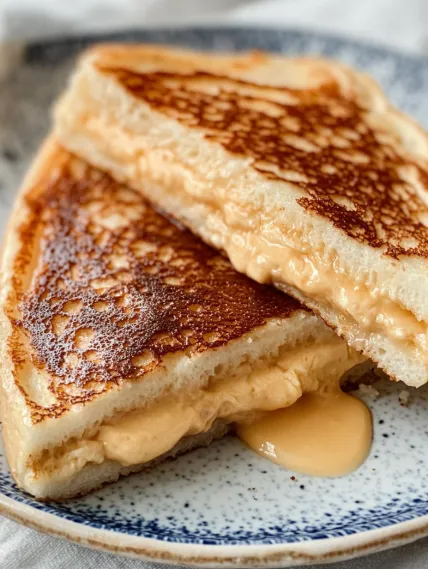 Pin
Pin
This custard-filled Hong Kong French toast transforms ordinary milk bread into a decadent brunch masterpiece. The contrast of the crispy golden exterior with the luscious salted egg yolk custard creates an unforgettable treat that elevates the classic French toast to new heights.
I first encountered this style of French toast during a trip to Hong Kong and became obsessed with recreating it at home. After several attempts, this version with its silky custard center has become our Sunday tradition, especially when we have guests to impress.
Ingredients
- Salted duck egg yolks: Provide the signature rich umami flavor that makes this dish truly special
- Milk powder: Intensifies the creamy taste without adding too much liquid
- Cornstarch: Stabilizes the filling so it remains pleasantly runny without leaking
- Butter: Adds richness and helps create that melt-in-your-mouth texture
- Powdered sugar: Sweetens without graininess for the smoothest custard
- Vanilla extract: Balances the savory elements with warm aromatic notes
- Turmeric: Offers a beautiful golden color that makes the filling look even more appetizing
- Thick milk bread slices: Create the perfect vessel with their pillowy texture
- Condensed milk: Serves as both a sealing agent and decadent topping
How To Make Hong Kong French Toast
- Prepare the custard filling:
- Begin by thoroughly mashing the salted duck egg yolks until completely smooth using a fork. This step is crucial for eliminating any lumps in your final custard. Add milk powder and cornstarch, continuing to mash until fully incorporated. These ingredients help achieve that perfect custardy consistency.
- Create the flavor base:
- Add softened butter, powdered sugar, vanilla extract, salt if using unsalted butter, and optional turmeric. Mix vigorously until you achieve a smooth, homogeneous mixture with no streaks. The filling should have a spreadable consistency similar to softened cream cheese.
- Prepare the bread:
- Carefully slice your thick milk bread pieces horizontally, leaving one edge intact to create a pocket. Press down gently in the center of the bottom piece to create a deeper well for holding more filling. This technique allows you to maximize the amount of custard while maintaining a sealed edge.
- Fill and seal:
- Spread a thin layer of condensed milk around the inside edges of the bread pocket. This acts as an edible glue to help seal your toast. Add 2-3 tablespoons of your prepared custard filling to the center, then close the top portion of bread over it. Gently press the edges together to create a seal around the perimeter.
- Create the batter:
- Whisk eggs thoroughly in a large bowl until completely uniform. Add milk, salt, and vanilla, whisking until fully combined. The batter should be smooth and have a consistent pale yellow color with no streaks of egg white visible.
- Soak and cook:
- Heat butter in a nonstick pan over medium heat until bubbling. Dip an assembled toast in the egg mixture, allowing it to soak for about 20 seconds per side. The bread should absorb some batter but not become soggy. Transfer to the hot pan and cook for approximately 2 minutes per side until golden brown and crispy on the outside while maintaining that gooey center.
- Serve immediately:
- Transfer to a serving plate, add a pat of butter on top if desired, and drizzle generously with sweetened condensed milk. The heat from the toast will melt the butter and create a luxurious sauce when combined with the condensed milk.

My grandmother introduced me to salted duck eggs years ago, and their complex flavor continues to fascinate me. The way they transform this simple breakfast into something extraordinary reminds me of Sunday mornings in her kitchen, where humble ingredients became magical in her hands.
Perfecting Your Duck Egg Custard
The cornerstone of authentic Hong Kong French toast lies in properly preparing the salted duck egg yolks. If using whole cooked eggs, simply halve them and scoop out the vivid orange yolks. For packaged raw yolks, a quick 10-minute bake at 350°F develops their flavor while making them easier to work with. The intensity can be adjusted to your preference. Two yolks create a milder, sweeter custard, while three produce a more pronounced savory profile that contrasts beautifully with the sweet condensed milk topping.
Bread Selection Matters
While traditional Hong Kong bakeries use thick milk bread for its cloud-like texture and subtle sweetness, you can adapt this recipe using what you have available. Standard sandwich bread works in a pinch when stacked for thickness. The key is achieving a sturdy vessel that can contain the custard filling without becoming soggy. Fresh bread benefits from a light toasting before assembly, creating structure that better absorbs the egg mixture while maintaining integrity during cooking.

Storage And Make-Ahead Tips
The filled uncooked toasts can be prepared up to 4 hours ahead and refrigerated, which actually improves their texture by allowing the bread to firm up slightly. The custard filling keeps well for 3 days refrigerated in an airtight container. While Hong Kong French toast is undeniably best fresh from the pan, leftovers can be wrapped tightly and refrigerated overnight. Reheat in a 350°F oven for 5-7 minutes or in a skillet over low heat with a touch of butter to restore some crispness to the exterior.
Recipe FAQs
- → Can I substitute salted duck egg yolks?
Yes, you can use regular salted egg yolks or create your own by curing raw egg yolks in a salt mixture. However, the flavor will vary slightly.
- → What type of bread works best for this toast?
Milk bread is ideal for this recipe due to its soft texture and ability to absorb the custard, but slightly stale standard slices of bread also work well.
- → How can I make the filling smoother?
Try mashing the egg yolks thoroughly or using a small blender to create a silky-smooth consistency before adding the other ingredients.
- → What is the best way to seal the toast?
Using sweetened condensed milk around the edges helps glue the bread together. Press gently but firmly to ensure it stays sealed during frying.
- → Can I use unsalted butter for the filling?
Yes, but it’s recommended to add 1/4 teaspoon of salt to mimic the balance provided by salted butter.
